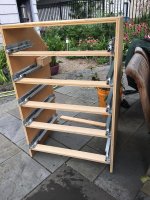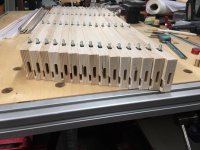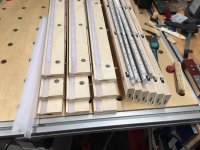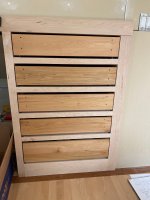I am making a knock down closet system and have what I think is a simple question. Set up: I want to fasten a vertical outside support to a horizontal bottom (all material is 3/4" Birch Ply laminated with Wilsonart laminate) with the DF 500 panel connectors. Question-Do I need to mortise exactly in the middle of the boards? and if so how do I find the middle? My concern is having the horizontal bottom sit proud or shy of the bottom of the vertical support or carcass member.
Thanks in Advance
Thanks in Advance





